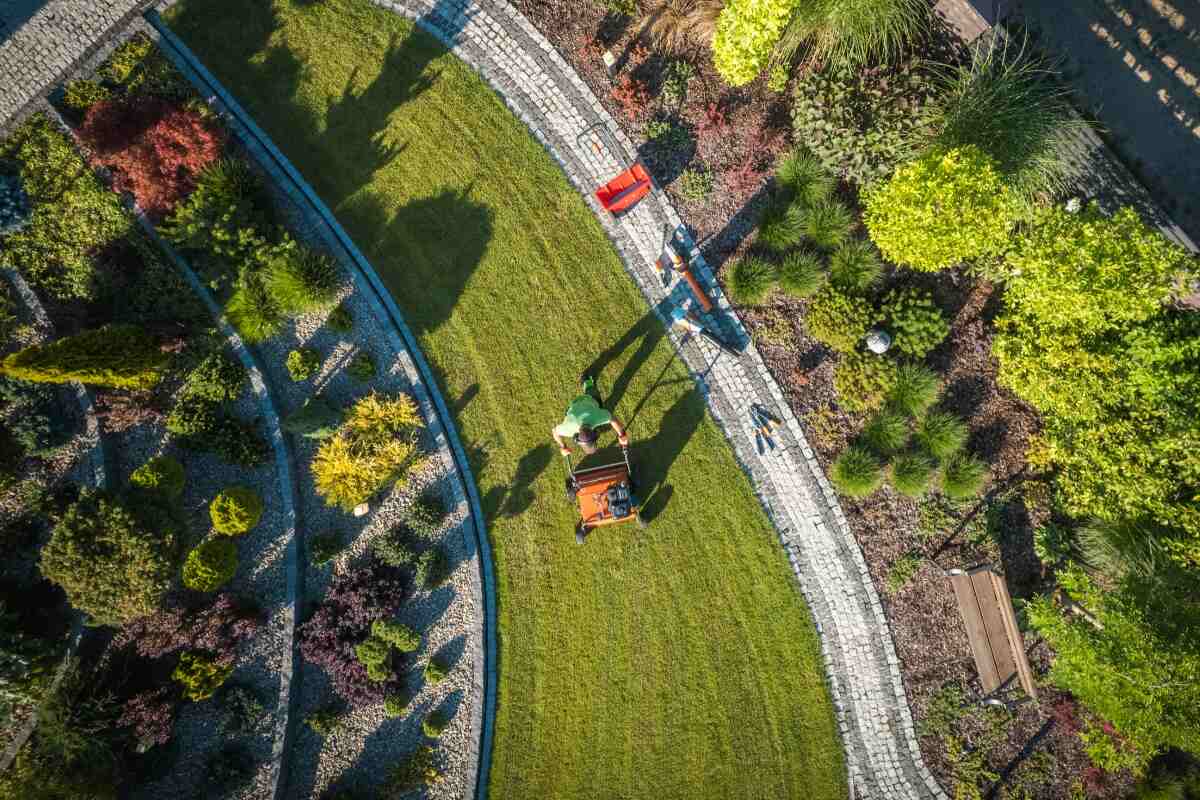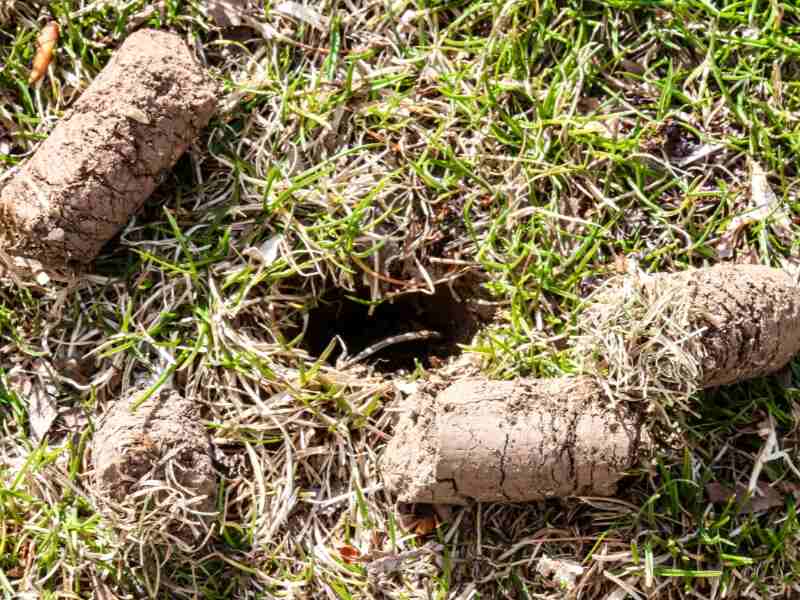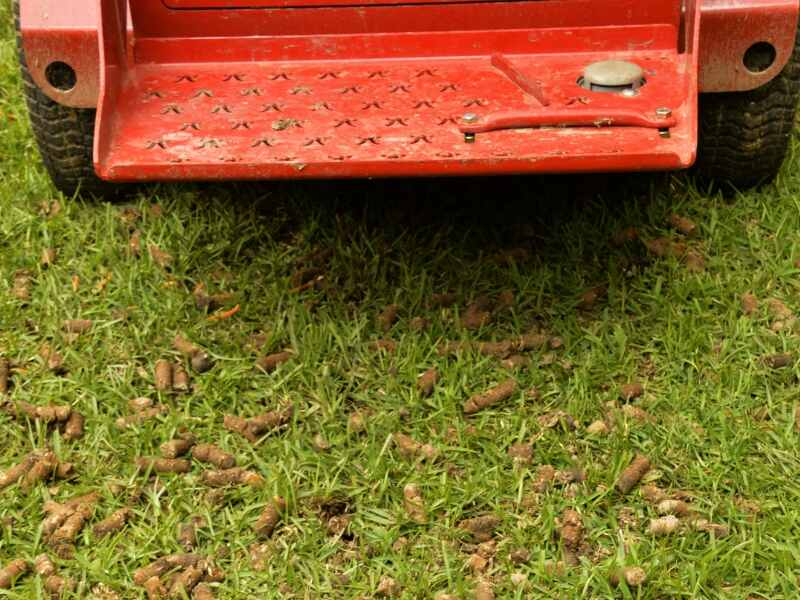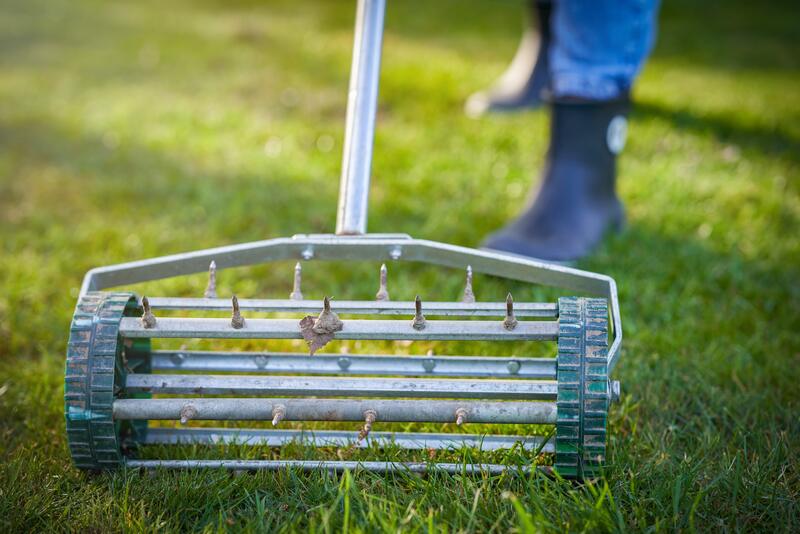
The best time to aerate a lawn in Indiana is during the growing season of your specific grass type. Cool-season grasses, including fescues, Kentucky bluegrass, and perennial ryegrass, are by far the most common lawn grasses in Indiana, and they grow most actively in fall. So, you should aerate your cool-season Indiana lawn in fall.
Most Hoosier State lawns won’t need to be aerated every year. The purpose of lawn aeration is to loosen compacted soil, and it typically takes the soil 2 to 3 years to become compacted enough to warrant aeration. However, very heavy soils that contain a lot of clay particles tend to become compacted more quickly and may require aeration every fall in Indiana.
In this article, we’ll go through the details of when, why, and how to aerate your Indiana lawn, plus where to find professional lawn aeration services in your neighborhood if you don’t feel like doing the job yourself.
What is Lawn Aeration?

Before we get into the timing, let’s define lawn aeration and why it’s essential for your Indiana grass. Lawn aeration is the process of perforating the soil with small holes to allow more air, water, and nutrients to reach the roots of grass plants. Because of foot traffic, heavy equipment, and other circumstances, soil can become compacted over time, limiting the flow of these critical components to your grass.
Aeration helps alleviate this compaction and promotes healthy grass growth by improving root growth. Aeration also helps water and fertilizers reach your grass more efficiently, reducing waste. In Indiana, where the weather changes throughout the year, proper aeration once every 1 to 3 years can be a huge boost to maintain a lush lawn.
When is the Best Time to Aerate Your Indiana Lawn?
The best time to aerate Indiana’s cool-season grasses is during the fall. If you miss out on fall aeration but your soil is suffering from compaction, you can also aerate during early spring of the next year.
Fall and early spring are the times of year when cool-season grass grows actively, so the grass can easily regrow and recover after the stress of aeration. Aerating your grass at the wrong time of year can do more harm than good.
If your lawn is showing any of these signs, you may want to aerate your lawn this year:
- Compacted soil
- Excessive thatch layer (more than 1/2 inch) on the surface of the lawn
- Sparse or thin grass growth
- Heavy foot traffic
- Bare spots in the grass
- Increased rainwater pooling and/or runoff
Fall Aeration
Aeration in early fall, from August to October, is commonly regarded as the best time for most Indiana lawns. Here’s why:
- Cooler temperatures: Fall weather is cooler, which means less stress on your lawn.
- Active root growth: During this time, grass focuses on root growth rather than top growth, making it ideal for encouraging healthy root development.
- Reduced weed competition: Weeds are less active in the fall, so there is a smaller chance that weed seeds will germinate in the holes left behind by aeration.
Early Spring Aeration
If you miss the fall window or your lawn shows signs of needing aeration after a hard winter, early spring (late March to early April) is your next best bet. Why? As the ground thaws after the winter, it becomes less compacted and easier to aerate.
Here are some reasons spring aeration can be beneficial:
- Prepares grass for growth: Aeration in early spring prepares your lawn for the upcoming growing season by ensuring it receives the nutrients it needs.
- Disrupts weed growth: By aerating early, you can disrupt weed growth and offer your grass an advantage in the resource competition. However, this can also be risky because many weeds germinate in spring, and the holes left behind by aeration give them space to grow.
How to Aerate Your Lawn in Indiana
There are two methods used for lawn aeration:
- Core aeration
- Spike aeration
Core Aeration

Core aeration, also known as plug aeration, requires an aeration machine that removes 2- to 3-inch-deep plugs or cores of soil from your lawn. Core aeration is better at alleviating pressure and creating space in the soil than spike aeration. It allows air, water, and nutrients to penetrate the soil more effectively. The removed cores also break down over time, enriching the soil with organic matter.
The average cost for core aeration is around $200 if you hire a professional service. Most homeowners hire a pro for core aeration because aeration machines can be expensive to rent and difficult to use.
You might spend about the same amount of money renting a core aerator as you would hiring a service. Get a free quote from a local lawn aeration pro to learn how much the service would cost you.
If you decide to aerate your own lawn, follow the steps below.
Steps for Core Aeration:
- Rent a core aerator machine, which might cost you around $100 daily.
- Mow your lawn to a height slightly lower than usual for better access to the soil.
- Water the lawn 1 to 2 inches one or two days before aerating to soften the soil.
- Run the aerator over your lawn in a crisscross pattern to cover the whole lawn area.
- Leave the soil plugs on the lawn to break down naturally and work as an organic fertilizer for your lawn.
Spike Aeration

Spike aeration involves creating holes in the soil by driving solid spikes or tines into the ground. While it can help with soil compaction to some extent, it is generally considered less effective than core aeration. Spike aeration is simpler and can be done using simple spike aerator tools or spiked aerator shoes. This method does not remove soil cores, so it doesn’t contribute organic matter to the soil.
Steps for Spike Aeration:
- Get a spike aerator tool or a pair of spike aerator shoes. These are available online and in person at home and garden supply stores.
- Water the lawn the day before aeration so the soil is as soft as possible without being soggy.
- Walk evenly across the lawn with your spike aerator or spike aerator shoes, perforating the soil after every step for even coverage of the whole lawn.
Whichever method you use, make sure to aerate your lawn uniformly, with holes around 2-4 inches apart, and cover the whole area of your lawn. For more information, see our detailed guide on How to Aerate a Lawn.
Pro Tip: After aeration, overseed your lawn and apply a top dressing to enhance grass health even further.
FAQ About Lawn Aeration in Indiana
What type of grass is suitable for Indiana?
Cool-season grasses like Kentucky bluegrass, fine fescue, and perennial ryegrass are the best grass types for Indiana lawns. If you’re looking to switch up your grass type, the best time to plant grass seed in Indiana is in late summer to early fall.
Can I overseed my lawn after aeration in Indiana?
Absolutely. Overseeding your grass after aeration is a significant boost for your lawn. The newly formed holes are optimal for seed-to-soil contact and germination. Since fall is also the best time to overseed a lawn in Indiana, these lawn care treatments pair well together.
Can I fertilize my lawn after aeration in Indiana?
Yes, you can fertilize your lawn after aerating since fall is also the best time to fertilize cool-season lawns in Indiana. In fact, it’s a good idea to fertilize soon after aerating the soil because the fertilizer will be able to move through the soil freely and reach grass roots more efficiently.
Hire a Lawn Aeration Pro
Aeration is one of the most crucial fall lawn care steps for lawns in Indiana, but it’s not the easiest thing to do. To be effective, aeration requires special equipment and thorough coverage of the whole lawn.
Luckily, it’s easy to find professional lawn aeration services through LawnStarter’s online platform. Just enter your address to be matched with the best Indiana lawn care pros in your city, whether you live in bustling Indianapolis or any of the scores of smaller cities and towns dotting the Hoosier State.
Main Photo Credit: welcomia / Canva Pro / License